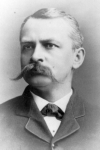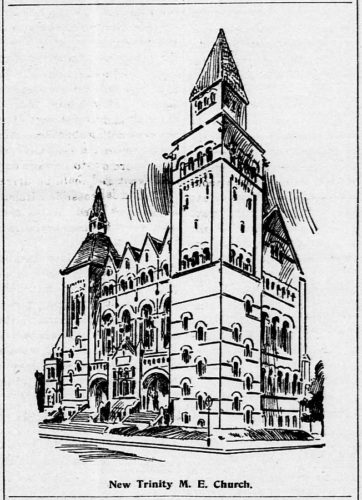 The Capitol Hill United Methodist Church is one of the newer church buildings on the Hill, standing on Seward Square since 1964. The congregation, however, has existed since 1960, when four Hill Methodist churches merged and moved into the house of worship of one of them: the Trinity Methodist Episcopal Church.
The Capitol Hill United Methodist Church is one of the newer church buildings on the Hill, standing on Seward Square since 1964. The congregation, however, has existed since 1960, when four Hill Methodist churches merged and moved into the house of worship of one of them: the Trinity Methodist Episcopal Church.
This congregation, in turn, can trace its roots back to 1802, when a number of families started the first Methodist Church in the District in a private home on Greenleaf Point. Five years later, they took over the small structure recently vacated by Christ Church. These quarters turned out to be temporary as well, and so the congregation – now generally referred to as Ebenezer’s – moved to a new building on 4th Street, just above G Street. For most of the 19th Century, this remained their home, even as they changed their name first to East Washington M.E. and then to Fourth Street M.E.
By the early 1890s, however, it was time for a new – and bigger – church. While it took a few false starts, eventually on September 9, 1896, the cornerstone for a new church was laid on the southwest corner of 5th and C Streets, SE. The church was designed by Paul J. Pelz, (pic) best-known for his work on the Library of Congress. In fact, throughout the time that he was designing the church, he was trying to get payment for that project, when he had spent some 15 years working on.

Drawing of the new church from the Morning Times of September 10,1896. J. Edgar Hoover lived in a house just to the right of this picture at the time, having been born the previous year. (LOC)
According the to Post the following day, the church would have
a frontage of 54 feet on C Street, and 75 feet on Fifth Street. The basement story will contain an assembly room for church entertainments, and also hat, cloak, and toilet rooms. … The church proper, or the auditorium, will be square, with two transepts. The seats will be arranged semi-circularly and raised on an incline, The pulpit and alter rail will be on the west side, the wall of which will be handsomely decorated.
A little over eight months later, the Post reported that the final services were to be held in the old church, and on May 24, the Evening Star reported on the first service had been held in the new building. The sum total written about the new church itself was that it was “one of the handsomest and most complete in the city, and when a few more articles of furniture have been supplied, will have cost about $60,000.” Far more ink was spilled on the sermon by Bishop John Fletcher Hurst: most of the column was taken up quoting large chunks of his sermon.
For the next 65 or so years, Trinity Methodist continued under that name and in that building. In 1960, however, a number of local Methodist churches merged, and moved into Trinity’s building. The building was deemed to small, and thus the current edifice was built, opening in 1964. In the process,the Trinity Church demolished, as well as the birthplace of J. Edgar Hoover next door, in spite of some attempts – discouraged by Hoover himself – to preserve the latter structure. Instead, there is one stained glass window dedicated to the life-long Presbyterian Hoover in the new building.
The congregation, now operating as the Capitol Hill United Methodist Church still operates in this building, but continues to see its beginning in the 1802 Greenleaf Point meeting.

Actually, the cornerstone of the current building was set into place in 1965, and the structure was completed in 1966. The tower is the same tower from the 1897 structure with a newer brick facade added to make it match the newer structure.